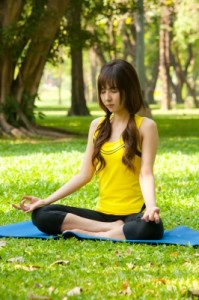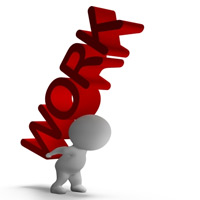The benefits of meditation and the Alexander Technique are becoming more known and accepted by mainstream doctors. Some doctors are recommending meditation to patients with high blood pressure, stress related conditions, heart disease, headaches, digestive disorders and more. Doctors are primarily recommending the Alexander Technique for posture issues and for back pain relief.
Good posture while meditating can be a challenge for those new to meditation as well as those more experienced meditators. Improving one’s meditation posture is important for people who meditate for ten minutes, and those who meditate for hours. The Alexander Technique can help with improving meditation posture, as well as posture in general.
In researching various instructions for proper meditation posture, a suggestion that keeps arising is ‘keep your spine straight.’ Slouching is the very picture of bad meditation posture. However, sitting rigidly upright is not the best alternative.
The spine is not straight to begin with, so we can’t keep it straight. The spine has curves (cervical, thoracic, lumbar, and sacral) What we don’t want to do is to exaggerate those curves by letting our heads rest back and down our our neck, compressing the spine.
Good meditation posture should also not include the idea of sitting stiffly upright, with no oppositional down. This so called ‘good posture’ adds excess tension and muscular restriction.
It is helpful to be more at ease both on and away from the cushion, chair, bench, pew, or floor. Why add tension to meditation because of your meditation posture? Why add tension to anything? So what should you do to improve your meditation posture?
Free your neck of excess tension. Let your head rotate forward (slowly, slightly lower your nose). Allow the crown of your head to move up. Breathe. Expand. Let your sit bones release down into your sitting surface, as your body, neck, and head move up.
Mark Josefsberg-Alexander Technique NYC
Image Courtesy of Freedigitalphotos.net-Asian Girl Doing Meditation” by artemisphoto












The thing is in meditation we should not focus on our surroundings or body, so it makes me wonder whether in this technique we are constantly focusing on our posture? or do we give our attention to our body only when we feel discomfort and pain?
Hi Serpico,
You’re right. We don’t want to constantly focus on our posture. That sounds pretty awful. Alexander spoke of ‘use of the self’, which goes beyond posture, and goes beyond the body. Just the word posture usually implies rigidity, which is exactly what we don’t want with the Alexander Technique. Also, the Technique is not just about the body; it is about the mind/body. Alexander described it as psycho/physical.
We also don’t give our attention to our body only when we’re in pain. The Alexander Technique and it’s principles are something you apply to your life whenever you think about them.
I think the way to approach this is when you’re meditating; meditate, when you’re playing music; play music. You can certainly apply the principles as you approach your pillow, or the floor, or a chair or a rock or the bandstand or whatever. If you periodically think about the Alexander Technique it will creep in to your daily life, and you can do anything with more ease. The Alexander Technique could help when you’re meditating and when you’re not, which means… all the time.
I believe what we want to do with the Alexander Technique is to consciously apply the principles in a very gentle, non-forced way. you practice the Alexander Technique, just as you practice meditation. It doesn’t take very long for new habits to be formed. That’s what F.M. Alexander discovered for himself. The Alexander Technique and meditation form a beautiful blend.
Hello Mark,
I’m “shopping” for a bodyworker for my doctor! Can you give me a call so I can explain?
347.427.1390
917.656.2481
Many thanks,
Meryl
I certainly will call. Right now in fact.
Mark